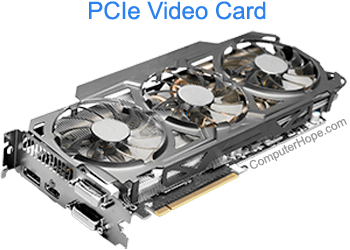Can't add a video card to a computer with onboard video
Updated: 06/30/2020 by Computer Hope

Below, is a listing of suggestions to try if your new video card is not auto-detected and you have an onboard video adapter.
- When plugging in the monitor, make sure the cable goes to the new video card and not the onboard.
- Verify with the computer's documentation or the manufacturer that there are no jumpers to disable the onboard video adapter or required settings changes in CMOS setup. Nearly all modern computers automatically disable the onboard video when a card is installed.
- Check to see if the video card you are attempting to install has jumpers or dip switches to change its resources that it's set to auto-detect.
- Before adding the card in Windows, disable the onboard video. To disable onboard video, open the Windows Device Manager.
- In Device Manager, click the plus by Display Adapter. In the Display Adapter menu, double-click the onboard video and place a check in the box to disable in hardware profile (located near the bottom). If there is no checkbox to disable the onboard video, click the Driver tab in the onboard video Properties window. Click the Disable Device button. Shut down the computer and physically install the new video card.
- If none of the above recommendations resolve your issue, we recommend you contact the manufacturer of your computer or video card.
Tip
When purchasing a video card for a computer with onboard video, we recommend buying a brand of video card that's different than that which came pre-installed. Having two video adapters from the same manufacturer is a common reason why the onboard video card may not be disabled automatically.
